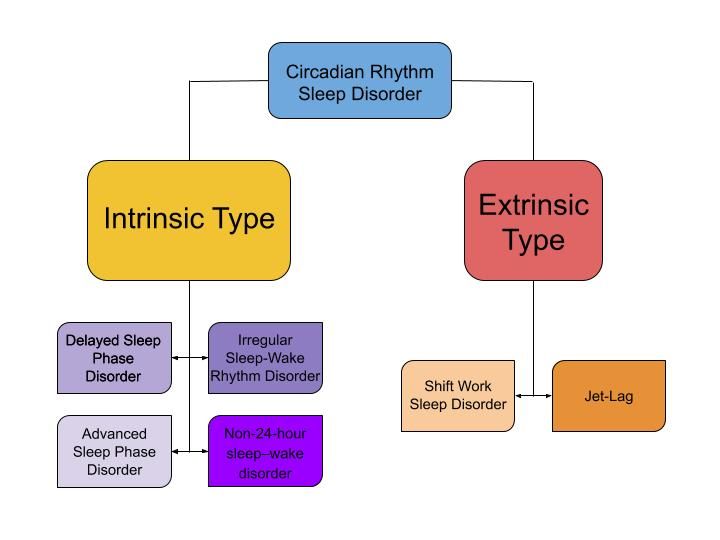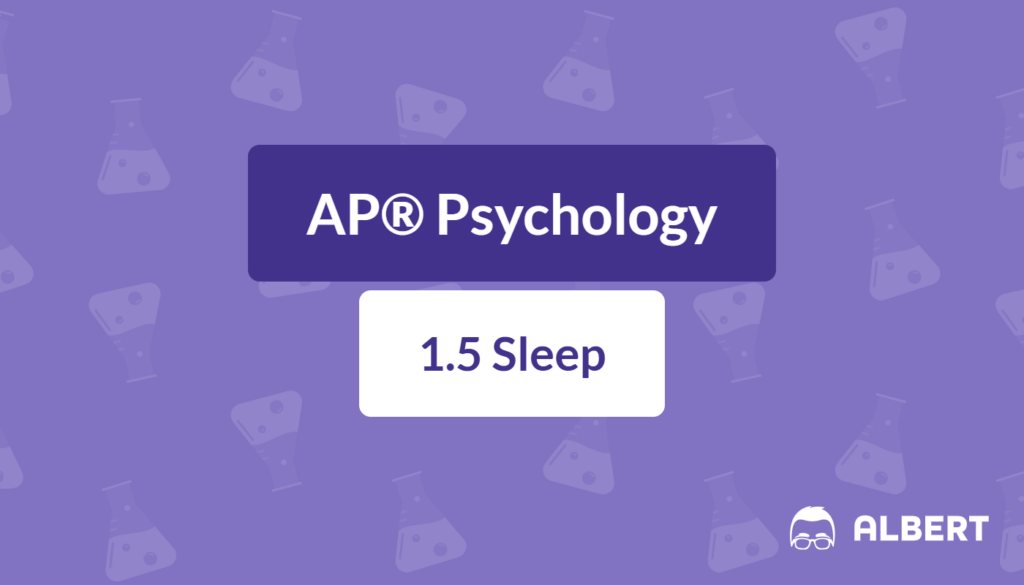Sleep is vital for both mental and physical well-being. It helps the brain organize memories, restores our body’s energy, and keeps emotions balanced. Yet, it often remains a mystery for many students. This article explores the science of sleep and the brain, sleep cycles, and common sleep disorders. It also examines why sleep is important for anyone preparing for the AP® Psychology exam or simply wanting better rest.
Below is a clear, step-by-step guide to understanding the sleep/wake cycle, levels of consciousness, stages of sleep, sleep theories, and sleep disorders. Each section includes an example with a detailed breakdown to ensure deeper understanding.
What We Review
Introduction
Humans spend roughly one-third of their lives sleeping. During this time, the body and brain undergo various processes essential for everyday functioning. Sleep and the brain are so closely linked that any disruption can lead to problems with focus, memory, and mood.
Next, this article will highlight the main elements of sleep cycles, including the circadian rhythm and different stages of sleep. Moreover, it will address the impact of disrupted sleep patterns, such as shift work and jet lag, on daily performance. Finally, it will discuss sleep disorders and why healthy sleeping habits matter for overall well-being.
The Sleep/Wake Cycle
What is the Sleep/Wake Cycle?
The sleep/wake cycle is guided by 24\text{-hour} biological rhythms known as circadian rhythms. These rhythms tell the body when to feel alert and when to feel tired. In humans, the internal clock is tuned to a daytime wake period and a nighttime sleep period. However, light exposure and daily activities can shift this rhythm slightly.
Circadian rhythms influence:
- Hormone release throughout the day
- Changes in body temperature
- Times of highest alertness or drowsiness
Without a consistent schedule, these natural cues get disrupted, making it hard to focus or maintain good mental health.
Example: The Effect of Circadian Rhythms on Behavior
Imagine a student who wakes up at 6 AM for school and goes to bed at 10 PM. Follow these steps to see how the circadian rhythm affects daily alertness:
- Morning (6 AM–7 AM): The student’s body temperature rises, and levels of hormones like cortisol increase, promoting wakefulness.
- Midday (12 PM–2 PM): The body is quite alert, so this is often a productive time.
- Afternoon Dip (2 PM–3 PM): A slight drop in energy occurs because the body’s natural rhythm signals a rest period. A short break or snack can boost alertness.
- Early Evening (5 PM–7 PM): The body is still relatively energetic, aiding after-school tasks or light exercise.
- Nighttime (9 PM–10 PM): The brain starts releasing melatonin, making the student drowsy and ready for sleep.
Step-by-Step Solution:
- Identify normal wake time (6 AM) and bedtime (10 PM).
- Note the high-energy points (morning and early evening).
- Recognize the low-energy point (afternoon dip).
- Observe how melatonin release signals bedtime.
Disruptions to the Sleep/Wake Cycle
However, certain factors can throw off a person’s sleep/wake cycle. Jet lag occurs when traveling across time zones quickly, leading to misalignment between local time and the body’s internal clock. Similarly, shift work (such as working a night shift) disrupts regular sleeping patterns by forcing individuals to stay awake when the body expects rest.
Such irregular schedules can lead to reduced concentration, mood swings, and decreased performance. Moreover, long-term disruption can harm overall physical health and mental clarity.

Levels of Consciousness
Understanding Consciousness
Consciousness is the awareness of thoughts, feelings, behaviors, and events in the internal and external world. It continuously shifts between higher awareness (wakefulness) and lower awareness (sleep). Although it might seem like a simple on/off switch, consciousness changes gradually.
During wakefulness, the mind is active and responsive to external stimuli. During sleep, the brain switches gears, slowing certain mental processes while still tracking basic bodily functions like breathing.
Example: Navigating Different Levels of Consciousness
Consider a person relaxing on the couch in the evening:
- Fully Awake: While watching a television show, attention is focused on the screen. Details in the program are clear.
- Drowsy: The individual starts to blink more often. Thoughts drift, and focus on the TV show decreases.
- Light Sleep: As they nod off, small sounds might still be registered, but the mind is less aware of surroundings.
- Deep Sleep: The person is no longer aware of the environment. External noises and movements are mostly ignored.
Step-by-Step Solution:
- Notice the transition from alertness (fully awake) to mild drowsiness.
- Recognize the shift into light sleep, where sensory input dims.
- Understand that deep sleep creates a significant drop in awareness.
Stages of Sleep
Diving into Sleep Stages
Sleep is divided into two main categories: NREM (non-REM) sleep and REM (rapid eye movement) sleep. Each has distinct brain activity patterns, easily identified by electroencephalogram (EEG) readings. These stages cycle throughout the night, each with critical roles in mental and physical health.
NREM Sleep: Stages 1 to 3
NREM stages progress as follows:
- Stage 1: Transition from wakefulness to sleep, often including drifting thoughts and light dozing.
- Stage 2: Heart rate slows, body temperature decreases, and EEG shows sleep spindles (brief bursts of brain activity).
- Stage 3: The deepest form of NREM sleep, sometimes called slow-wave sleep, where the body repairs tissues and builds energy reserves.
Example: Identifying Hypnogogic Sensations
Hypnogogic sensations occur in Stage 1 NREM, just as one is dozing off.
- Lying in bed with eyes closed, the body relaxes.
- Sudden twitches, falling sensations, or fleeting dream-like images appear.
- These sensations can often startle the person awake momentarily.
- The individual then drifts back to sleep and enters deeper stages.
Step-by-Step Solution:
- Look for body’s transition cues (closing eyes, heavier breathing).
- Notice the brief, odd sensations (falling or twitching).
- Understand that the sensations are normal in early sleep.
- Recognize the shift into deeper sleep if not fully awakened.
REM Sleep: The Paradox of Rest
REM sleep is called paradoxical because EEG waves look similar to a waking brain, yet the body is in its most relaxed state. Arms and legs experience muscle atonia, preventing physical actions from matching dream movements. Moreover, REM sleep often becomes longer in later cycles of the night. If someone is deprived of REM sleep, the body later makes up for it through REM rebound, increasing the amount of REM in subsequent sleep.
Example: Dreaming in REM Sleep
Dreams commonly occur in REM. During a typical dream:
- The sleeper’s eyes move back and forth under closed eyelids.
- Brain waves increase to patterns similar to wakefulness.
- Muscles stay relaxed to prevent acting out scenes in the dream.
- Upon waking, the dream may feel very vivid or quickly fade from memory.
Step-by-Step Solution:
- Note rapid eye movements behind closed lids.
- Identify rise in brain activity through observed patterns or specialized EEG.
- Understand that muscle atonia keeps the sleeper safe.
- Acknowledge how dream recall varies after waking.
Theories of Sleep and Dreaming
Current Theories of Sleep Function
Scientists propose that sleep allows the brain to consolidate memories and restore resources used during the day. During NREM sleep, the body repairs itself and stores physical energy, while REM sleep supports emotional balance and cognitive functions.
Exploring Dreams: Activation-Synthesis vs. Consolidation Theory
- Activation-Synthesis Theory: Dreams are the brain’s attempt to make sense of random neural activity.
- Consolidation Theory: Dreams help organize and store the day’s learning, creating more stable long-term memories.
Example: Applying Sleep Theories to Real Life
Consider a student studying for an exam:
- They spend the evening reviewing new vocabulary words.
- During sleep, the student’s brain reorganizes these new memories.
- Dreams might randomly combine images from the day, seen as activation-synthesis.
- Meanwhile, memory consolidation secures important words into long-term storage.
Step-by-Step Solution:
- Observe the study process before bed.
- Understand that memory consolidation occurs during sleep, making memories stronger.
- Recognize that any bizarre dream imagery might be the mind interpreting random signals (activation-synthesis).
- Note how well the information is recalled the next day, suggesting effective consolidation.
Sleep Disorders and Their Impact
Understanding Common Sleep Disorders
Several disorders disrupt healthy sleep and can harm both physical and mental performance:
- Insomnia: Difficulty falling or staying asleep.
- Narcolepsy: Uncontrollable episodes of falling asleep suddenly.
- REM Sleep Behavior Disorder: Acting out dreams due to lack of normal muscle atonia.
- Sleep Apnea: Breathing interruptions during sleep.
- Somnambulism (Sleepwalking): Walking or performing acts during deep sleep.
Effects of Sleep Disorders on Daily Life
Humans rely on restful sleep for mental clarity, reaction time, stable mood, and strong immune function. Therefore, those struggling with sleep disorders often experience daytime fatigue, poor concentration, and irritability. Over time, chronic sleep disruptions can affect academic performance, relationships, and long-term health.
Example: Addressing Sleep Disorders
Imagine a student who stays up late using a mobile phone and experiences insomnia:
- They find it tough to doze off due to the bright light from the screen.
- Anxiety builds when sleep does not come quickly.
- The next day, the student feels groggy and cannot concentrate in class.
- Gradually setting an earlier screen cutoff time and sticking to a bedtime schedule helps.
- If insomnia continues, consulting a healthcare professional for further advice may be needed.
Step-by-Step Solution:
- Identify the habit that disrupts falling asleep (late-night phone use).
- Recognize emotional factors (anxiety) contributing to insomnia.
- Take practical measures (reduce screen time, follow a consistent schedule).
- Seek professional help if lifestyle changes prove insufficient.
Conclusion
In summary, sleep affects nearly every aspect of health and daily functioning. The sleep/wake cycle shapes behavior, while different levels of consciousness guide awareness. Furthermore, the stages of sleep—NREM and REM—play essential roles in growth, energy restoration, and cognitive processes. Theories about why sleep and dreams occur highlight the importance of memory consolidation. Finally, keeping track of healthy sleep patterns and addressing sleep disorders can ensure better mental performance and overall well-being.
Adequate rest is not a luxury; it is a necessity. Regular, high-quality sleep makes it easier to succeed in academics, athletics, and everyday life.
Quick Reference Chart: Sleep Vocabulary
| Term | Definition or Key Feature |
| Circadian Rhythm | Internal 24\text{-hour} cycle regulating sleep and wake |
| Hypnogogic Sensations | Brief, dream-like illusions during Stage 1 NREM sleep |
| NREM Sleep | Comprises Stages 1–3 of sleep with distinct EEG patterns |
| REM Sleep | A paradoxical stage with high brain activity, but relaxed muscles |
| REM Rebound | Increased REM sleep following deprivation |
| Insomnia | Difficulty initiating or maintaining sleep |
| Narcolepsy | Sudden, uncontrollable sleep episodes |
| REM Sleep Behavior Disorder | Lack of muscle atonia during REM, leading to dream enactment |
| Sleep Apnea | Temporary pauses in breathing during sleep |
| Somnambulism (Sleepwalking) | Walking or performing tasks during deep NREM sleep |
| Memory Consolidation | The process of organizing and storing new information during sleep |
| Activation-Synthesis Theory | Dreams as the brain’s attempt to interpret random neural signals |
| Consolidation Theory | Dreams as a method to help solidify and store memories |
Sharpen Your Skills for AP® Psychology
Are you preparing for the AP® Psychology test? We’ve got you covered! Try our review articles designed to help you confidently tackle real-world AP® Psychology problems. You’ll find everything you need to succeed, from quick tips to detailed strategies. Start exploring now!
- Nature vs. Nurture: AP® Psychology Review
- Parts of the Nervous System: AP® Psychology Review
- Neuron Activation: AP® Psychology Review
Need help preparing for your AP® Psychology exam?
Albert has hundreds of AP® Psychology practice questions, free response, and full-length practice tests to try out.








